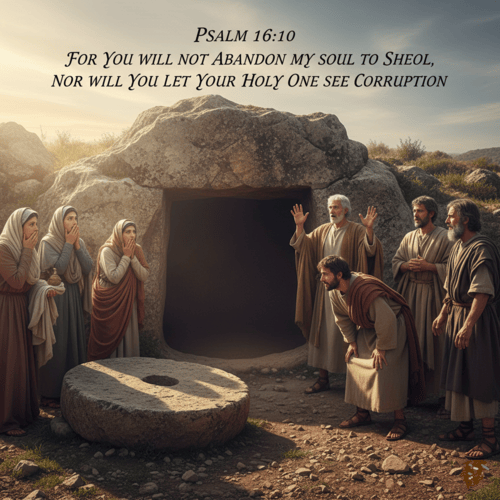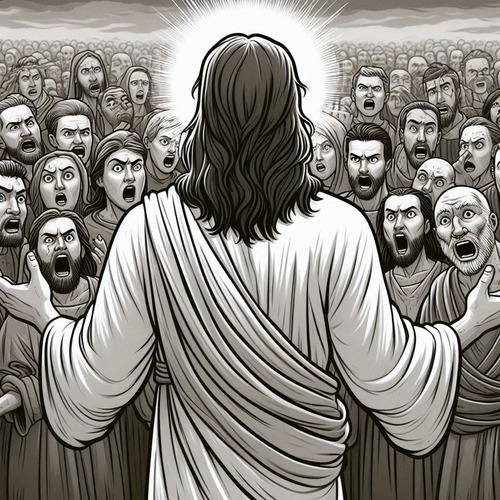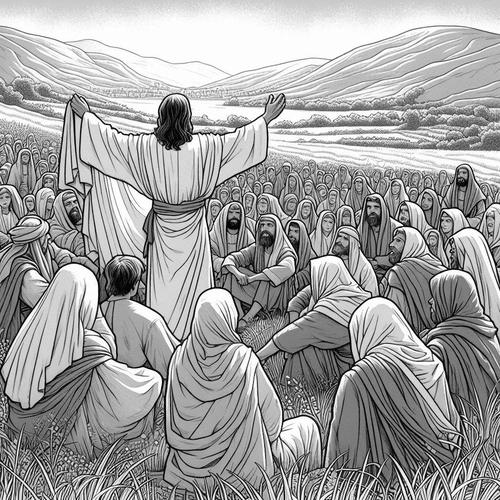“It is Finished”: What Does Jesus Mean?
FROM OUR SERIES ON CHRIST’S SEVEN FINAL UTTERANCES FROM THE CROSS
In the waning moments of His earthly life, as darkness covered the land and the weight of sin bore down upon Him, Jesus spoke three powerful words that would echo through eternity: “It is finished” (John 19:30).
These final words weren’t merely an announcement that His suffering was ending. They were a declaration of victory—a divine pronouncement the mission for which He’d come was now complete. But what exactly did Jesus mean? What was “finished”?
THE POWER OF TETELESTAI
In the original Greek, Jesus uttered a single word: Tetelestai. This term carried rich meaning in the first century. It was written on business documents to indicate “paid in full.” Roman judges pronounced it when a prisoner had fully served his sentence. Artists declared it when completing a masterpiece.
When Jesus cried Tetelestai, He wasn’t whispering in defeat but proclaiming the successful completion of His redemptive work.
WHAT WAS FINISHED?
The Fulfillment of Prophecy: From Genesis to Malachi, Scripture pointed toward a coming Messiah who would crush the serpent’s head, be the seed of Abraham blessing all nations, and suffer as Isaiah’s Servant. Jesus’ life fulfilled over 300 prophecies, and with His death, the final predictions were completed. As He declared earlier in His ministry, “Do not think that I have come to abolish the Law or the Prophets; I have not come to abolish them but to fulfil them” (Matthew 5:17).
The Payment for Sin: At the cross, Jesus took upon Himself the full weight of human sin. The Reformed tradition particularly emphasises the substitutionary nature of Christ’s atonement—He stood in our place, receiving the punishment we deserved.
When He said “It is finished,” Jesus announced the debt of sin had been paid completely. No further payment would ever be necessary or possible. The ledger was settled, the account balanced, the price paid in full.
The Defeat of Sin, Death, and Satan: Paul writes Christ “disarmed the powers and authorities, making a public spectacle of them, triumphing over them by the cross” (Colossians 2:15). In His death, Jesus broke the power of sin over humanity, defeated death itself, and crushed Satan’s hold on creation.
What appeared to evil forces as their greatest victory became their ultimate defeat. It was finished—the battle was won, though the news of victory would continue spreading throughout the world.
THE ESTABLISHMENT OF A NEW COVENANT
The Old Covenant, with its sacrificial system and ceremonial laws, pointed toward the need for a perfect sacrifice. Hebrews tells us these sacrifices were but “a shadow of the good things to come” (Hebrews 10:1).
With Christ’s death, the New Covenant was sealed in His blood. The temple veil tore from top to bottom, symbolising the way for direct access to God was now open. The old system was finished; the new had come.
IT IS FINISHED: REFORMED PERSPECTIVES
The Reformed tradition brings several key emphases to our understanding of “It is finished”:
- Particular Redemption: When Jesus said “It is finished,” Reformed theology highlights that He accomplished a definite, successful redemption for His people. His death didn’t merely make salvation possible—it secured it for those whom the Father had given Him (John 17:9).
- Effectual Atonement: Christ’s work on the cross wasn’t just an attempt at salvation that depends on human response to become effective. It was a completed, successful work. When Jesus said “It is finished,” He meant the atonement had fully accomplished its intended purpose.
- Divine Sovereignty in Salvation: The Reformed perspective emphasises that the cross represents the outworking of God’s eternal plan. From before the foundation of the world, God ordained Christ’s sacrifice (Revelation 13:8). When Jesus declared “It is finished,” He affirmed the perfect execution of the Father’s sovereign will.
LIVING IN THE FINISHED WORK
So what does Christ’s finished work mean for us today?
- It means we can rest in the completeness of Christ’s work. We don’t need to add to it through our own merit or effort. Salvation is by grace alone, through faith alone, in Christ alone.
- It provides unshakable assurance. If our salvation depended on our performance, we’d live in constant fear. But because Christ proclaimed “It is finished,” we can know with certainty our redemption is secure.
- It changes how we live. No longer striving to earn God’s favour, we’re freed to live in grateful response to what Christ has already accomplished. As Paul writes, “He died for all, that those who live should no longer live for themselves but for him who died for them and was raised again” (2 Corinthians 5:15).
CONCLUSION
When Jesus cried “It is finished” from the cross, He wasn’t simply saying His suffering was over. He was declaring redemption’s price had been paid, prophecy fulfilled, Satan defeated, and salvation secured.
In these three words, we find the heart of the Christian faith—not what we must do for God, but what God has done for us in Christ. The work is complete. The victory has been won. The debt has been paid.
It is finished, indeed.
IT IS FINISHED: RELATED FAQs
Did other religious traditions or philosophies influence how early Christians understood Jesus’ statement “It is finished”? While Jesus’ words were uniquely rooted in Jewish messianic expectations and sacrificial theology, early Christian understanding was shaped within a Greco-Roman world. The concept of a completed work or perfect sacrifice would have resonated with both Jewish listeners familiar with Temple sacrifice and Gentiles who understood ritual completion. Reformed theologians such as Michael Horton note the definitiveness of tetelestai contrasts sharply with pagan cyclical views of time and recurring sacrifices, emphasising the once-for-all nature of Christ’s work.
How do Reformed scholars interpret “It is finished” in relation to the doctrine of limited atonement? Reformed theologians like John Owen in his classic work “The Death of Death in the Death of Christ” argue that “It is finished” supports limited (or particular) atonement. They contend Jesus’ declaration indicates a completed work with definite results—not just making salvation possible but actually securing it for the elect. RC Sproul explained that when Jesus said “It is finished,” He meant the atonement had definitively accomplished its intended purpose for those given to Him by the Father, not merely creating potential salvation for all without securing it for any.
Was Jesus quoting or alluding to any Old Testament passage when He said “It is finished”? Many Reformed scholars see connections between Jesus’ final declaration and Psalm 22, which begins with “My God, my God, why have you forsaken me?” (which Jesus quoted earlier) and ends with a note of completion: “He has done it” (Psalm 22:31). John Calvin and others have noted this connection, suggesting Jesus may have had the entire trajectory of this psalm in mind, moving from desolation to triumph. Some also see connections to Daniel 9:24, which speaks of “finishing transgression” and “bringing in everlasting righteousness.”
How does Jesus’ statement relate to His High Priestly role? Reformed theologians emphasise that “It is finished” marks the completion of Christ’s sacrificial work as our Great High Priest. Unlike Levitical priests whose work was never complete (Hebrews 10:11), Christ “offered for all time one sacrifice for sins” (Hebrews 10:12). Christ’s declaration signifies His fulfillment of the Day of Atonement ritual—not just offering the sacrifice but completing the entire priestly work, which is why He could then “sit down at the right hand of God.”
What implications does “It is finished” have for sanctification in Reformed theology? While salvation is completely accomplished in Christ’s finished work, Reformed theology distinguishes between completed justification and ongoing sanctification. John Piper observes “It is finished” means the basis for our growth in holiness is secured, though our experience of it unfolds over time. The indicative (what Christ has done) precedes and grounds the imperative (how we should live). Sanctification is not adding to Christ’s work but the Spirit applying what is already finished to our daily experience.
How has “It is finished” been interpreted differently across church history? Early church fathers such as Chrysostom emphasised victory over demonic powers. Medieval theologians often focused on satisfaction of divine justice. The Reformers highlighted the completion of atonement and fulfillment of law. Modern Reformed scholars like Richard Gaffin have developed the “already/not yet” framework, seeing “It is finished” as declaring the decisive beginning of new creation while awaiting consummation.
Does “It is finished” have eschatological significance? Yes, many Reformed scholars see profound eschatological meaning in Jesus’ declaration. According to Geerhardus Vos, “It is finished” announces the inauguration of the kingdom while pointing to its future consummation. GK Beale connects it to the completion of the new temple in Christ’s body, which would be raised in three days. Anthony Hoekema saw it as the decisive moment when the “age to come” broke into “this present age.” When Jesus declared “It is finished,” He was announcing the decisive battle in the war had been won, though the final victory parade awaits His return.
SEVEN UTTERANCES FROM THE CROSS: OUR RELATED POSTS
- Father, Forgive Them: Who Was Jesus Praying For?
- ‘Today You Will Be With Me in Paradise’: What Did Jesus Mean?
- John 19:28: Why Did Jesus Say ‘I Thirst’?
- Why Does Jesus Cry, ‘My God My God’?
- Last Words on the Cross: Into Your Hands I Commit My Spirit
Editor's Pick

Why Do People Hate the Doctrine of Election?
…WHEN THEY REALLY SHOULDN’T Few Bible doctrines provoke stronger reactions than election. The idea that God chose some for salvation [...]

The Doctrine of Providence: Does God Really Govern All Things?
You’re sitting in the doctor’s office when the diagnosis lands like a thunderclap. Your mind races: Why this? Why now? [...]

No Decay, No Defeat: What It Means That Christ’s Body Saw No Corruption
On the Day of Pentecost, Peter stood before thousands and made a startling claim: David's body decayed in the tomb, [...]
SUPPORT US:
Feel the Holy Spirit's gentle nudge to partner with us?
Donate Online:
Account Name: TRUTHS TO DIE FOR FOUNDATION
Account Number: 10243565459
Bank IFSC: IDFB0043391
Bank Name: IDFC FIRST BANK






